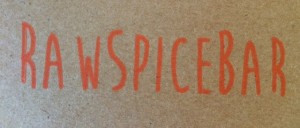Allspice

Botanical rendering of allspice
The Basics
Allspice has many names: Jamaican pepper, kurudu, pimenta, pimento (not to be confused with pimiento), clove pepper, and newspice. It comes from the unripe but fully mature dried berries of the Jamaican pepper tree or Pimenta dioica or Pimento officinalis. There’s that pimento word but allpice is not the pepper vegetable. It’s confusing, I know. Here’s another layer to the pepper confusion. When harvested the berries are firm and green. As the berries ripen they lose their aroma and flavor. They are laid out to dry in the sun where they shrivel up into small, dark hard lumps that resemble peppercorns. And why wouldn’t they? Peppercorns are also dried berries but they come from a completely unrelated plant (a vine, actually).
The Form
Once dried, the fruit is ground into the powdery substance we recognize as allspice. But pay attention. Sometimes a mix of spices will be blended and sold as “allspice” but allspice is really a particular spice from an individual plant. Just read the label to make sure you’re purchasing true allspice and not a spice blend.
The Flavor
Allspice has a wonderfully strong aroma that balances sweetness and heat. It tastes like a blend nutmeg, cinnamon and cloves. It is used in savory and sweet dishes and is extremely popular in Carribean foods. Allspice is an essential ingredient in jerk seasonings, mole sauces, sausages and curries. Middle Eastern cuisine takes full advantage of allspice. In Jamaica where the tree grows plentiful, islanders use the leaves in their cooking. Leaves are steeped in sauces to infuse the flavor then removed. Storage: keep in a glass jar out of direct light. The berries hold their flavor longer and allspice will be stronger in flavor if you grind them using a spice mill or coffee grinder.
The Story
In the mid 1600’s, the English gave allspice it’s name because it’s flavored resembled a blend of all their more popular spices (cloves, cinnamon and nutmeg). Allspice must have been an interesting discovery for them given that only 50 years prior, they were engaged in a spice war across the ocean as they battled for trading rights with the spice islands for the very spices that make up the flavor base of allspice.
No birds, no allspice. In Jamaica the pimenta tree spreads through bird droppings. Birds eat the berries then drop the seeds across the island which are delivered to the ground in their own little pack of fertilizer. All attempts to cultivate the Jamaican pepper tree were unsuccessful until it was discovered that when allspice berries pass through avian digestive systems they encounter the only environment (acidity? temperature?) capable of germinating the seed.
Health Benefits
Allspice contains eugenol, a weak anti-microbial agent. It’s used as a deoderant (allspice is immensely fragrant) and also has claims to helping with indigestion. Clove oil belongs to a class of oil known to irritate skin and expand blood vessels. Allspice also contains tannins that provide a warming effect. As a home remedy it’s popular in hot baths and/or as a poultice.
Sources:
Allspice by Peggy Trowbridge Fillippone in About.com: http://homecooking.about.com/cs/spices/a/allspice.htm
The Epicentre: http://www.theepicentre.com/Spices/allspice.html
Wikipedia: http://en.wikipedia.org/wiki/Allspice
Try It!
Jerk Seasoning
- 2 tablespoons dried minced onion
- 2 1/2 teaspoons dried thyme
- 2 teaspoons ground allspice
- 2 teaspoons ground black pepper
- 1/2 teaspoon ground cinnamon
- 1/2 teaspoon cayenne pepper
- 1/2 teaspoon salt
- 2 tablespoons vegetable oil




5 Pingbacks